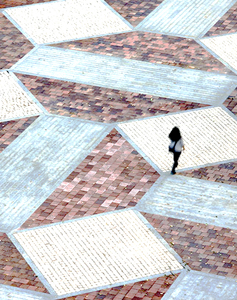You are in: Home page > Magazine Archive > Architecture of the city / architectures for the cities

Manuela Raitano
Architecture of the city / architectures for the cities
From Architecture of the City to architectures for the cities runs a substantial difference. It means to conceive the city not as an ideal place, but as the factual scene of daily activities: a real machine a co-habitèr.
Urban project in Italy has often embraced the first point of view, coming only in recent times (compared to other European countries) to the second conception. We can now try to understand the reasons that led to this theoretical orientation. First, it depends on the scale of our cities: in European context the scale sometimes is ‘large’, more often ‘medium-small’, while the so-called XL size of Asian and South American mega-cities is a rare opportunity project in our operating environments. Furthermore, within the urban areas it is also well recognizable an inner core consisting of historic/consolidated/protected ancient fabrics that represent (along with the football team and the local cuisine) the genetic identity that distinguishes urban communities from each other. Then, since in our discipline theoretical formulations are closely dependent on project materials, it follows that during twentieth century this ‘dimensional’ condition, coupled with this strong characterization of identity, has orientated urban studies in a precise direction.The syllogism was clear: if Italian cities retain a scale which allows a reading of the whole, then it will be possible to design the entire city as a whole in which civic architecture will be entrusted with the task of giving identity to the city itself, or even better to confirm the identity of the historic core. The very opposite of megalopolis generic indeterminacy described by Koolhaas. Yet this condition has produced a paradox: this sort of in vitro preservation of past identities has transformed Italian cities in 'postcards' representing themselves, with a pop effect not far from that of generic cities. In this context the city as 'living environment' was cut off in researches as in urban planning, and the lack of policies implemented by contemporary urban planning (Piano Casa) confirms this trend.
So, in a moment characterized by the inanity of policy to govern urban transformation, by a sense of uncertainty that pushes the citizens in a more private dimension of existence (offset by the ability of the individual to establish virtual contacts that overcome the local condition), the idea of a Representative Architecture is no longer sustainable. In a condition of loss of meaning and shape as theorized by Boeri (l’Anticittà), nothing is so prevalent that it should be represented, made it central for its meaning and role. In short, it’s not sufficient to certify the ineffectual state of Rossi theoretical model, descended from the Sistine urban plan and based on the duality between "fabric" and "monument". This is a shared notion nowadays. We rather need to declare that urban policies in Italy have never gone over there. As a matter of fact, ISTAT data prove that over 50% of public investments are intended to special projects. MAXXI impressive museum, as the sites of AV stations, as the unnecessary luxury enclaves of city life buildings in Milan, as the mammoth skeleton Calatrava designed for the world swimming championship, now abandoned on the edge of the GRA, are all factual proofs of this attention for special projects. At the other side, was not even made a serious attempt to combine new monuments with widespread policies of recovery, demolition, regeneration of urban fabric; not a serious attempt, in short, to work on the average quality of the living-city, on its housing, offices, infrastructures, public collective spaces.
An other one of the PIIGS, as they say in ‘economic slang’, has much to teach us. Spain is a country in deep crisis, nonetheless the network of diffuse architecture built in the last decades (parks, streets, social housing, schools, kindergartens) often made of inexpensive materials, relying on a language refined with a few simple recursive elements, will probably be able to resist the shock of a decade in which resources for new investments will clearly decrease. In our country, instead, the decrease of the investments due to the spending review will be based on the stalemate of past decades.
Therefore, it’s urgent for us to claim new programmatic objectives of urban policies, taking at the same time a clear anti-rhetorical stand in urban studies. This second condition is entirely up to us, it depends from our researches, from teaching, which will have to make central some themes:
1_Housing as a qualified urban facility, sort of remodeled Unité implemented to respond to a double scale of needs, ones of the inhabitants, others of neighborhood, housing will avoid a sense of closure and will expand urban vitality, contributing to heighten the quality of life of a neighborhood, overcoming the duality between fabric and monuments.
2_ Infrastructure as material of architecture, finally freed from the exclusive dominion of technical engineering, infrastructure must be considered as a material of architectural design; it will mean working on edges, sections, intersections, transforming itself in a great opportunity to have a kinetic approach to the city.
3_ Public spaces as a multi-level network, small diffuse interstitial spaces inter-connected in order to allow a continuous walk/bike fruition, will involve ground floors in urban network, allowing a friendly user fruition of the city; a grid of uninterrupted cycle/walkways paths will give to every citizen the same opportunities of mobility and accessibility in terms of small/middle distance.
Manuela Raitano, Researcher at the Faculty of Architecture 'Sapienza' University of Rome, teaches Architectural and Urban Design














